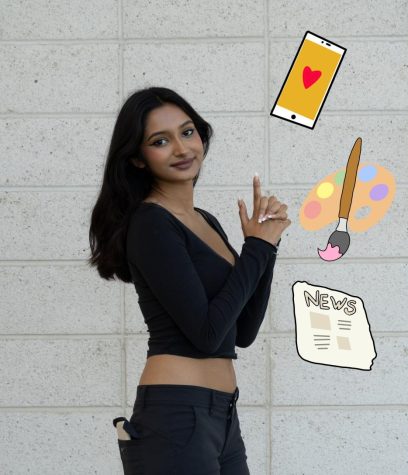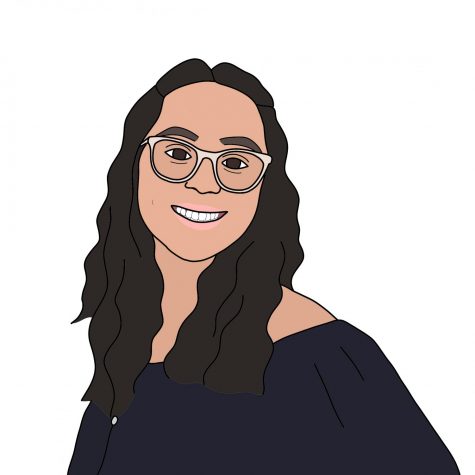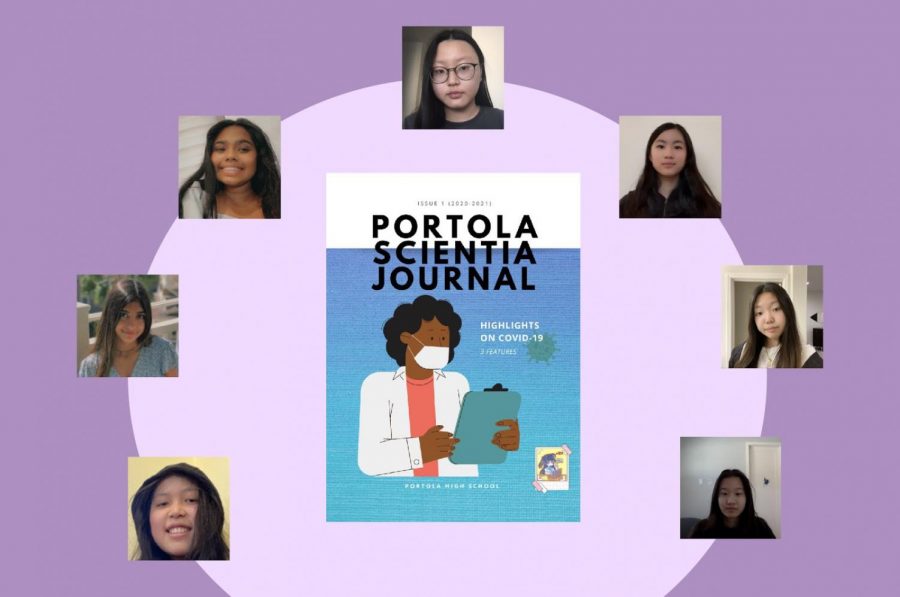Scientia Journal Club Explores Fusion of Science and Writing
Like many other clubs, the newly added Scientia Club had to adapt its interactive activities to be virtual and hosted weekly Zoom meetings during which club members collaborated to create their first magazine issue, pictured above.
The Scientia Journal staff embraces a special merging of scientific research, words, design and graphics. The group of students have collaborated and dedicated their time weekly over the past school year to publish content that informs the school community about topics like the tech generation and various long-term effects of COVID-19.
Led and founded by sophomore Joanna Rhim this school year, the Scientia Journal club, consisting of only seven members, released its first ever magazine issue on May 10 on its Instagram and website. They have researched and written about various scientific breakthroughs and findings on topics of the members’ interests, such as new research on Alzheimer’s disease.
“The actual inspiration was based on my interest in reading science magazines and comic books from when I was younger, and I wanted to share a similar interest in a fun way with other high school students,” Rhim said. “Also, I wanted to publicize and discuss science topics in a high school friendly way.”
For Rhim, preparation for the magazine involved communal ideation for article topics and her own research on existing high school science magazines to influence the layout of their own. The issue is currently composed of three media categories: infographics, research-based articles and opinionated articles about the research topics.
“Being part of Portola Scientia has been really fun and interesting for me,” art and writing committee member and sophomore Klara Parang said. “I’ve gotten to learn many new things and how to research and explore many different topics, especially for me. Since I did a summer program, kind of relating to research and stuff like that, I took my knowledge from that and applied it to Portola Scientia.”
Club adviser and science teacher Jeralyn Newton said she appreciated the uniqueness of the club, as the members independently produced the magazine using motivation fueled by their individual interests.
“A lot of clubs I have run in the past are associated with hobbies or passions or raising money for a cause, so this one really stands out because it’s a really educational club,” Newton said. “These students are choosing to spend their free time doing more school work. They’re researching; they’re reading; they’re writing; they’re looking into different topics and things.”
Your donation will support the student journalists of Portola High School. Your contribution will allow us to purchase equipment and cover our annual website hosting costs.

Sidra Asif is the Back Page Editor and Social Media Manager for her third year on the Pilot. Outside of creating content for the newspaper, you can find...

Naila Talib is one of the Portola Pilot’s staff writers, and is so excited to be joining the crew for the first time! She is extremely grateful to be...




